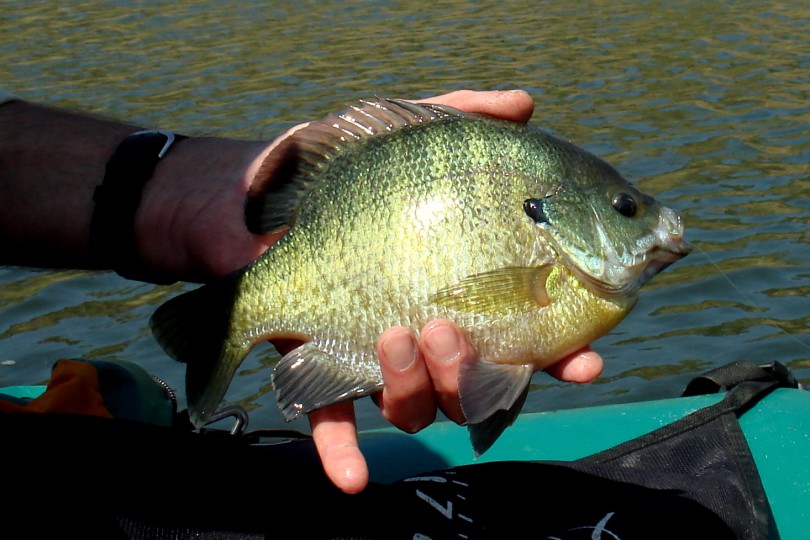By Dennis Smith
It’s February and there’s still a lot more snow in our future, but I’m so over winter I could cry. While some of my fishing buddies are quite content to squat over holes in the ice jigging for big trout, I’m craving warm summer days, fly rods and a pan full of sizzling bluegill fillets.
Bluegills are one of our most prolific game fish — certainly one of the better tasting — and are caught by more Colorado anglers than all other species combined, but trout, bass and walleyes generate most of the angler attention in our state and the majority of ink in our outdoor publications. Maybe that’s because big bluegills aren’t commonly found in the Rocky Mountain West; they’re also more difficult to catch than big trout or bass — a fact serious anglers might find hard to admit. Their casual disregard for big bluegills seems a peculiar bit of irony when you consider that rarity and degree of difficulty are two of the attributes anglers usually prize most when rating game fish. Hard fighting is another, and many anglers will concede that, pound for pound, bluegills can be one of the most tenacious fighters of all.
In spite of all they have going for them, Colorado bluegills have an image problem that’s difficult to overlook: Most are small and easily caught. They’re prolific breeders. More often than not they will overrun the food chain in waters where they’re commonly found and render the entire fishery little more than a pond full of hungry runts. There’s not much glory in catching a 4-inch fish that would just as soon eat a radish peel as a red worm.
Big bluegills, on the other hand, are fish of a completely different scale. I’m referring here to those in the 1½–to 2– pound class. Bluegills of this size are usually, though not always, found in deep lakes and reservoirs with thriving populations of predator species. Often referred to as “bull” bluegills by fishermen across the Southern and Midwestern states, they’re secretive and spookier than a herd of rabbits in a field full of coyotes. They can also be extremely selective feeders, a term usually reserved for persnickety trout.
If catching little bluegills is easy, catching large ones consistently is a distinct challenge. Here in Colorado where trophy bluegill habitat is at a premium to begin with, simply finding productive bluegill water is the main difficulty. While several of Colorado’s record-class bluegills came from abandoned gravel pits (and these should not be ignored), anglers searching specifically for trophy-class bulls should focus their efforts on bigger waters, especially those with lots of bass, perch or walleyes.
A fertile lake with large numbers of predatory species will produce big bluegills. Fertile water supports a variety of foods for the ’gills to feed on, and proper chemistry accelerates growth rates. Lakes rich in limestone, for example, usually grow big fish faster than those lacking it. A shortage of ideal spawning habitat limits breeding to some extent, and predators control overpopulation by eating the young bluegills.
Ask other fishermen, wildlife officers, biologists and park rangers if they know where to find big bluegills, and don’t be surprised if they all point you toward well-known bass and walleye lakes.

